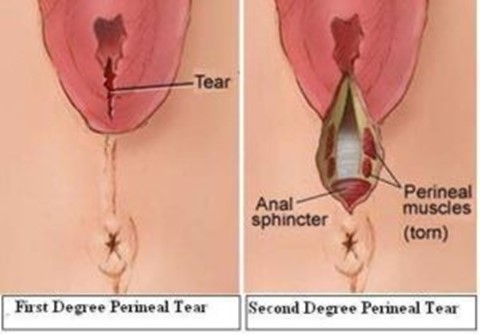A nurse is reinforcing teaching about signs preceding the onset of labor with a client who is at 39 weeks of gestation. Which of the following statements should the nurse include?
"You will experience urinary retention."
"You will have a decrease in vaginal discharge."
"You will experience a surge of energy."
"You will have a weight gain of 0.5 to 1.5 kilograms."
The Correct Answer is C
Choice A reason: "You will experience urinary retention." is incorrect, as this statement does not describe a sign preceding the onset of labor. Urinary retention can occur during labor due to pressure from the fetal head or epidural anesthesia, but it is not a sign that labor is imminent. The nurse should encourage the client to void frequently and monitor their bladder status.
Choice B reason: "You will have a decrease in vaginal discharge." is incorrect, as this statement does not describe a sign preceding the onset of labor. Vaginal discharge can increase before labor due to cervical ripening and dilation, which can cause bloody show or mucus plug loss. The nurse should educate the client about normal and abnormal vaginal discharge and when to report it.
Choice C reason: "You will experience a surge of energy." is correct, as this statement describes a sign preceding the onset of labor. A surge of energy, also known as nesting instinct, can occur before labor due to hormonal changes or psychological factors. The nurse should advise the client to conserve their energy and rest as much as possible before labor.
Choice D reason: "You will have a weight gain of 0.5 to 1.5 kilograms." is incorrect, as this statement does not describe a sign preceding the onset of labor. Weight gain can occur during pregnancy due to fetal growth, fluid retention, or increased caloric intake, but it is not a sign that labor is imminent. The nurse should monitor the client's weight and fluid balance and report any sudden or excessive weight gain that may indicate preeclampsia or other complications.
Nursing Test Bank
Naxlex Comprehensive Predictor Exams
Related Questions
Correct Answer is A
Explanation
Choice A reason:
Panting can help prevent premature pushing and reduce the risk of cervical edema or laceration. The client should be instructed to take short, shallow breaths through her mouth during contractions until she reaches 10 cm of dilation.
Choice B reason:
Assessing the perineum for signs of crowning is not a priority at this stage, as the fetus is not yet at a low enough station to be visible. Crowning usually occurs when the fetus is at +4 or +5 station.
Choice C reason:
Assisting the client into a comfortable position is important, but it does not address the urge to push. The client should be encouraged to change positions frequently to promote fetal descent and comfort.
Choice D reason:
Helping the client to the bathroom to empty her bladder is not advisable, as it can increase the risk of cord prolapse or rupture of membranes. The client should have an indwelling catheter inserted if she is unable to void spontaneously.
Correct Answer is ["C","D","E"]
Explanation
Choice A reason: While ice packs can help reduce swelling and discomfort, they are not essential for preventing infection.
Choice B reason: Sit on an inflatable donut to protect the perineum is incorrect, as this can increase pressure and blood flow to the perineum and delay healing. The nurse should advise the client to avoid sitting on hard or uneven surfaces and to use a pillow or a cushion for comfort.
Choice C reason: Perform hand hygiene before and after voiding is correct, as this can prevent contamination and infection of the perineal area. The nurse should instruct the client to wash their hands with soap and water or use an alcohol-based hand sanitizer before and after using the toilet.
Choice D reason: Blot the perineal area dry after voiding is correct, as this can keep the perineal area clean and dry and prevent irritation and infection. The nurse should instruct the client to use a clean, soft cloth or tissue and gently pat or blot the perineal area from front to back after voiding.
Choice E reason: Clean the perineal area from front to back is correct, as this can prevent bacteria from entering the vagina or urethra and causing infection. The nurse should instruct the client to use a peri-botle filled with warm water and squirt it over the perineal area from front to back after each voiding or bowel movement. The client should also change their perineal pad frequently and dispose of it properly.

Whether you are a student looking to ace your exams or a practicing nurse seeking to enhance your expertise , our nursing education contents will empower you with the confidence and competence to make a difference in the lives of patients and become a respected leader in the healthcare field.
Visit Naxlex, invest in your future and unlock endless possibilities with our unparalleled nursing education contents today
Report Wrong Answer on the Current Question
Do you disagree with the answer? If yes, what is your expected answer? Explain.
Kindly be descriptive with the issue you are facing.
